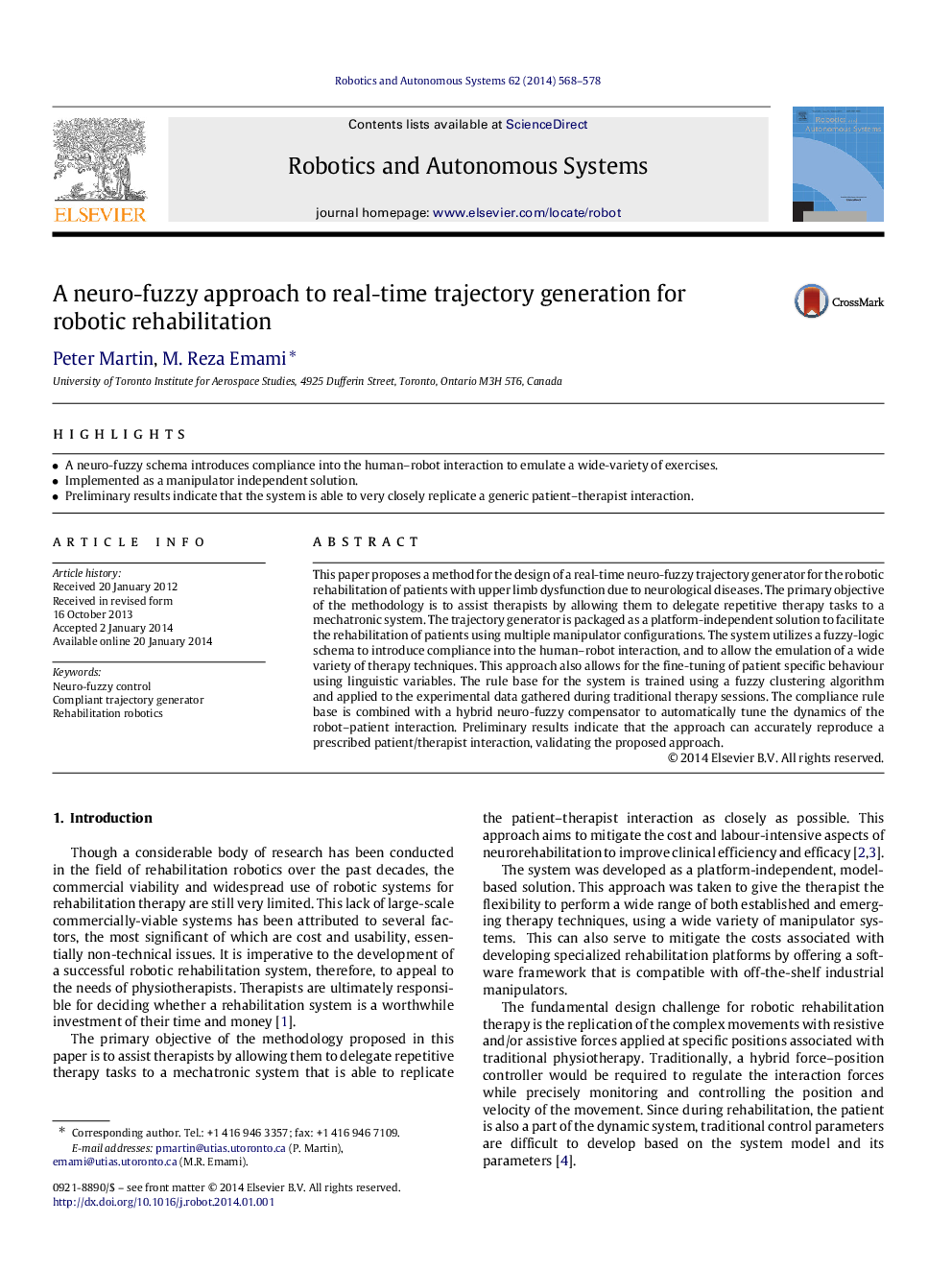| کد مقاله | کد نشریه | سال انتشار | مقاله انگلیسی | نسخه تمام متن |
|---|---|---|---|---|
| 412346 | 679627 | 2014 | 11 صفحه PDF | دانلود رایگان |
• A neuro-fuzzy schema introduces compliance into the human–robot interaction to emulate a wide-variety of exercises.
• Implemented as a manipulator independent solution.
• Preliminary results indicate that the system is able to very closely replicate a generic patient–therapist interaction.
This paper proposes a method for the design of a real-time neuro-fuzzy trajectory generator for the robotic rehabilitation of patients with upper limb dysfunction due to neurological diseases. The primary objective of the methodology is to assist therapists by allowing them to delegate repetitive therapy tasks to a mechatronic system. The trajectory generator is packaged as a platform-independent solution to facilitate the rehabilitation of patients using multiple manipulator configurations. The system utilizes a fuzzy-logic schema to introduce compliance into the human–robot interaction, and to allow the emulation of a wide variety of therapy techniques. This approach also allows for the fine-tuning of patient specific behaviour using linguistic variables. The rule base for the system is trained using a fuzzy clustering algorithm and applied to the experimental data gathered during traditional therapy sessions. The compliance rule base is combined with a hybrid neuro-fuzzy compensator to automatically tune the dynamics of the robot–patient interaction. Preliminary results indicate that the approach can accurately reproduce a prescribed patient/therapist interaction, validating the proposed approach.
Journal: Robotics and Autonomous Systems - Volume 62, Issue 4, April 2014, Pages 568–578
